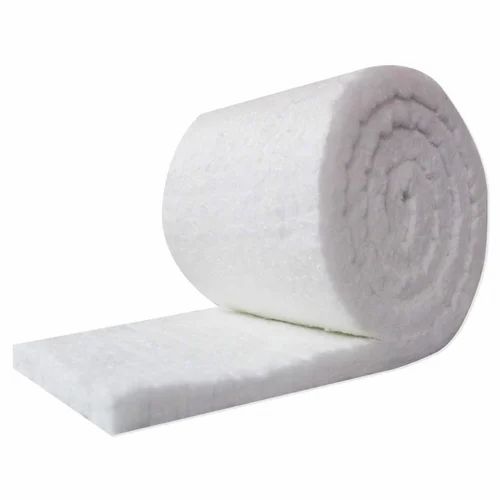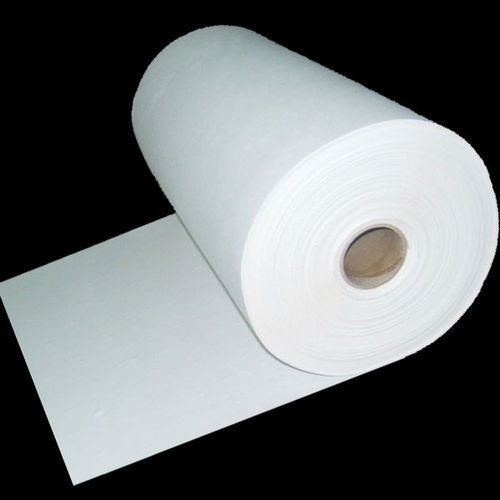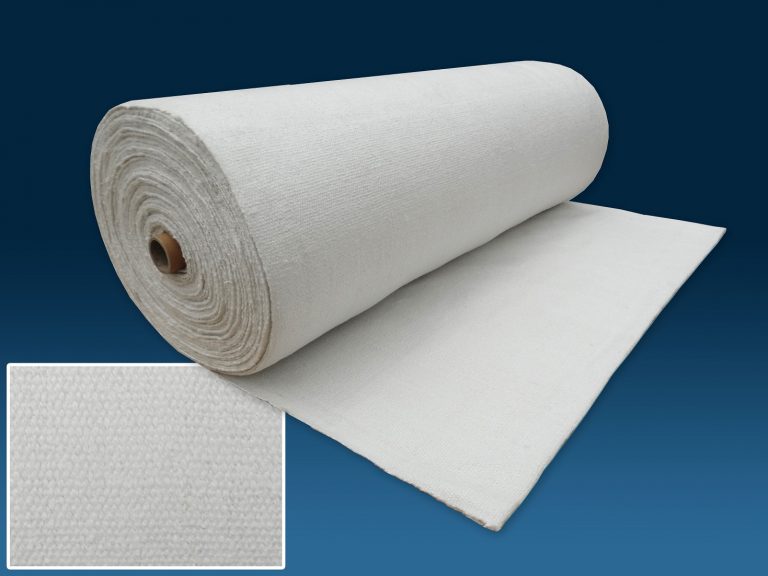CERAMIC FIBER INSULATION MATERIALS IN KENYA
At Olinc Industrial Products & Equipment Limited, we are the leading dealer of genuine Ceramic Fiber insulation materials and other thermal insulation materials for your applications.
Ceramic fiber insulation materials are a type of high-temperature insulation commonly used in various industrial applications in Kenya. They are known for their excellent thermal resistance, low thermal conductivity, lightweight nature, and resistance to chemical attack. These materials are typically made from alumina-silica fibers and are available in various forms, such as blankets, boards, papers, modules, and textiles
Composition
- Ceramic fiber materials are primarily composed of alumina (Al2O3) and silica (SiO2).
- Other additives may be included to enhance specific properties or to provide different formulations suitable for various applications.
Ceramic fiber insulation materials are available in various forms, which are;
1. Ceramic Fiber Blanket
Flexible and lightweight rolls or sheets that are easily cut and shaped for insulation in applications like furnaces and kilns. Ceramic fiber blanket is the best choice in pizza oven insulation in Kenya. Due to its flexibility, and easy to cut, ceramic fiber blanket is easily molded around various shapes of pizza ovens in Kenya.
Here are some common uses of ceramic fiber blankets:
Furnace and Kiln Insulation: Ceramic fiber blankets are extensively used to line the walls, roofs, and doors of furnaces, kilns, and other high-temperature equipment. They provide thermal insulation to retain heat within the furnace or kiln, improving energy efficiency and process control.
Pipe and Duct Insulation: Ceramic fiber blankets are wrapped around pipes, ducts, and other cylindrical surfaces to provide thermal insulation. They help prevent heat loss and maintain consistent temperatures in industrial processes involving fluid transport, such as in refineries, chemical plants, and power plants.
Boiler Insulation: In boilers used for steam generation or heating applications, ceramic fiber blankets are applied to insulate boiler walls, doors, and other components. They help minimize heat loss and improve the efficiency of the boiler system.
Expansion Joint Seals: Ceramic fiber blankets are used to create seals in expansion joints of industrial equipment, such as furnaces, reactors, and kilns. They provide thermal insulation while accommodating thermal expansion and contraction, preventing leaks and maintaining equipment integrity.
Fire Protection: Ceramic fiber blankets are used for fire protection in buildings, vehicles, and industrial facilities. They are installed in walls, ceilings, and floors to provide passive fire protection by slowing down the spread of flames and reducing heat transfer.
Acoustic Insulation: In addition to thermal insulation, ceramic fiber blankets can also provide acoustic insulation in buildings, machinery enclosures, and automotive applications. They help absorb sound waves and reduce noise levels, improving comfort and safety in noisy environments.
High-temperature Gaskets and Seals: Ceramic fiber blankets can be cut and molded into gaskets and seals for high-temperature applications. They are used to create a tight seal between components in equipment such as furnaces, ovens, and kilns, preventing heat loss and gas leakage.
Mold Wrap in Metal Casting: Ceramic fiber blankets are wrapped around metal molds in metal casting processes to provide insulation and prevent heat loss during casting. They help maintain the desired temperature distribution within the mold, ensuring quality casting results.

2. Ceramic Fiber Boards
Rigid panels used for specific insulation needs, such as lining in industrial ovens and fire protection. Ceramic fiber boards are best used in:
Furnace and Kiln Linings: Ceramic fiber boards are frequently used to line the walls, floors, and roofs of furnaces, kilns, and other high-temperature processing equipment. They provide thermal insulation to help maintain consistent temperatures within the furnace or kiln, while also protecting the structural integrity of the equipment.
Boiler Insulation: In boilers used for industrial processes or power generation, ceramic fiber boards are utilized for insulation to minimize heat loss and improve energy efficiency. They help maintain high temperatures inside the boiler while preventing heat from escaping to the surrounding environment.
Heat Shields and Thermal Barriers: Ceramic fiber boards are used as heat shields and thermal barriers in various applications where protection against high temperatures is necessary. They can be installed in automotive exhaust systems, aerospace components, and other machinery to shield sensitive components from heat damage.
Backup Insulation: In applications where other types of insulation are used as primary insulation, ceramic fiber boards can serve as backup insulation. They provide an additional layer of thermal protection and help enhance the overall insulation performance of the system.
Fireplace and Stove Linings: Ceramic fiber boards are used to line the interiors of fireplaces, wood stoves, and pellet stoves to improve their efficiency and safety. They help reflect heat back into the room while protecting the surrounding structure from excessive heat.
Soundproofing and Acoustic Panels: In addition to thermal insulation, ceramic fiber boards can also provide soundproofing benefits. They are used to construct acoustic panels and enclosures in industrial facilities, recording studios, theaters, and other environments where noise control is essential.

3. Ceramic Fiber Paper
Ceramic fiber paper is a lightweight, flexible insulation material made from ceramic fibers. It is commonly used in applications requiring high-temperature resistance, thermal insulation, and flexibility. Here are some common uses of ceramic fiber paper:
Gasketing and Sealing: Ceramic fiber paper is often used as a gasket material in high-temperature applications where a flexible, heat-resistant seal is required. It is used to create seals between flanges, joints, and other mating surfaces in equipment such as furnaces, boilers, and ovens.
Insulating Barrier: Ceramic fiber paper is used as an insulating barrier to prevent heat transfer between components in industrial equipment. It can be placed between hot and cold surfaces to reduce heat loss or to protect sensitive components from excessive heat.
Thermal Insulation: Ceramic fiber paper provides thermal insulation in various applications where space is limited or where rigid insulation materials are not suitable. It is used to line walls, doors, and roofs of furnaces, kilns, and other high-temperature equipment to retain heat and improve energy efficiency.
Wrap for High-temperature Components: Ceramic fiber paper can be wrapped around high-temperature components such as pipes, valves, and ducts to provide thermal insulation and protect nearby surfaces from heat radiation.
Mold Release Liner: In the casting and molding industry, ceramic fiber paper is used as a mold release liner to prevent sticking and facilitate the removal of molded parts from molds. It can withstand the high temperatures involved in molding processes without degrading or contaminating the molded parts.
Electrical Insulation: Ceramic fiber paper is used as an electrical insulation material in applications where high-temperature resistance is required. It can be used as a barrier between electrical components and heat sources to prevent electrical insulation breakdown due to heat exposure.
Fire Protection: Ceramic fiber paper is used for fire protection in buildings, vehicles, and industrial facilities. It can be installed in walls, ceilings, and floors to provide passive fire protection by slowing down the spread of flames and reducing heat transfer.
Thermal Expansion Joint Filler: Ceramic fiber paper is used as a filler material in expansion joints of industrial equipment to accommodate thermal expansion and contraction. It helps maintain equipment integrity by preventing leaks and minimizing stress on joints.

4. Ceramic Fiber Textiles
Ceramic fiber textiles encompass a range of materials including fabrics, ropes, tapes, and sleeving made from ceramic fibers. They offer excellent thermal insulation properties, as well as resistance to high temperatures and chemical corrosion. Here are some common uses of ceramic fiber textiles:
Insulation Wraps and Covers: Ceramic fiber textiles are used to wrap around pipes, valves, fittings, and other components to provide thermal insulation. They help prevent heat loss and maintain consistent temperatures in industrial processes, such as in refineries, chemical plants, and power plants.
Expansion Joint Seals: Ceramic fiber textiles are used as filler materials in expansion joints to accommodate thermal expansion and contraction in equipment such as furnaces, boilers, and kilns. They help maintain equipment integrity by preventing leaks and minimizing stress on joints.
Gaskets and Seals: Ceramic fiber textiles are used to create flexible gaskets and seals in high-temperature applications where a tight seal is required. They are used between flanges, joints, and other mating surfaces in equipment such as furnaces, ovens, and exhaust systems.
High-temperature Curtains and Blankets: Ceramic fiber fabrics and blankets are used to create curtains and blankets for heat containment and protection in industrial processes. They can be hung or draped to partition areas, shield equipment, or protect personnel from radiant heat and splashes of molten metal.
Fireproof Clothing and Personal Protective Equipment (PPE): Ceramic fiber textiles are used to manufacture fireproof clothing, gloves, aprons, and other PPE for workers in high-temperature environments, such as foundries, steel mills, and welding operations. They provide protection against radiant heat, flames, and molten metal splash.
Insulation Pads and Panels: Ceramic fiber textiles are used to manufacture insulation pads and panels for thermal insulation applications in buildings, vehicles, and industrial equipment. They can be used in walls, ceilings, floors, and doors to improve energy efficiency and fire resistance.
Heat Shielding: Ceramic fiber textiles are used for heat shielding in automotive, aerospace, and marine applications. They are applied to protect sensitive components, wiring harnesses, and fuel lines from heat radiation and exhaust gases.
- Furnace and Kiln Linings: Ceramic fiber textiles are used as linings in furnaces, kilns, and other high-temperature equipment to provide insulation and protect against thermal shock. They help maintain consistent temperatures and improve the efficiency of heat treatment processes
When in the form of textile, ceramic fiber is commonly used in architecture. They are used in fire doors, furnace insulation, special heat resistant containers and for heating pipes.

Application of ceramic fiber insulation materials in Kenya
Industrial Furnaces and Kilns: Ceramic fiber insulation is widely used to line the walls, floors, and roofs of industrial furnaces, kilns, and ovens. It helps to conserve heat, improve energy efficiency, and maintain uniform temperatures during heating processes.
Boilers and Heat Exchangers: In boilers and heat exchangers used in power generation, manufacturing, and chemical processing industries, ceramic fiber insulation is employed to reduce heat loss, enhance thermal efficiency, and ensure consistent operation.
Piping and Ductwork Insulation: Ceramic fiber materials are wrapped around pipes, ducts, and other process equipment to provide thermal insulation and protect against heat loss or gain. This is critical in industries such as petrochemicals, oil and gas, and HVAC systems.
Automotive and Aerospace: Ceramic fiber insulation is used in automotive and aerospace applications for thermal management. It helps in reducing heat transfer to sensitive components, enhancing engine efficiency, and improving overall performance.
Metal Processing: In metal processing industries such as steel mills, foundries, and aluminum smelting plants, ceramic fiber insulation is utilized in furnaces, ladles, crucibles, and other equipment to withstand extreme temperatures and prevent heat loss.
Fire Protection and Passive Fireproofing: Ceramic fiber insulation materials serve as effective passive fireproofing solutions in buildings, ships, and industrial facilities. They help to contain fires, reduce spread, and protect structural elements during emergencies.
Appliances and Consumer Electronics: Ceramic fiber insulation is used in household appliances such as ovens, stoves, and fireplaces to provide efficient thermal insulation and improve energy efficiency. It also finds applications in consumer electronics for heat management and safety.
Power Generation: Ceramic fiber materials are employed in power plants for insulation purposes in boilers, turbines, and exhaust systems. They help in maintaining high temperatures, improving combustion efficiency, and reducing heat loss during energy generation processes.
High-temperature Seals and Gaskets: Ceramic fiber insulation is used to fabricate seals and gaskets for high-temperature applications, ensuring leak-proof connections and preventing heat loss in industrial equipment, furnaces, and piping systems.
Cryogenic Applications: Ceramic fiber materials are used in cryogenic applications for their low thermal conductivity and resistance to extreme cold temperatures. They provide insulation in liquefied natural gas (LNG) storage tanks, pipelines, and other cryogenic systems.
Overall, ceramic fiber insulation materials play a crucial role in numerous industrial, commercial, and residential applications where thermal management, energy efficiency, and fire protection are paramount. Their versatility, durability, and high-temperature performance make them indispensable in modern engineering and construction practices.
Properties:
- – High-temperature resistance: Can withstand temperatures up to 2300°F (1260°C) and higher, depending on the specific product.
- – Low thermal conductivity: Provides effective thermal insulation in high-temperature environments.
- – Low heat storage: Rapid heat-up and cool-down properties.
- – Chemical resistance: Generally resistant to most chemicals, though specific formulations may vary.
Installation:
- – Ceramic fiber materials are typically easy to install, often requiring cutting and shaping to fit specific applications.
- – Proper safety precautions, including the use of personal protective equipment, are essential during installation due to the potential for airborne fibers.
Talk to us
Have any questions? We are always open to talk about your business, new projects, creative opportunities and how we can help you.
